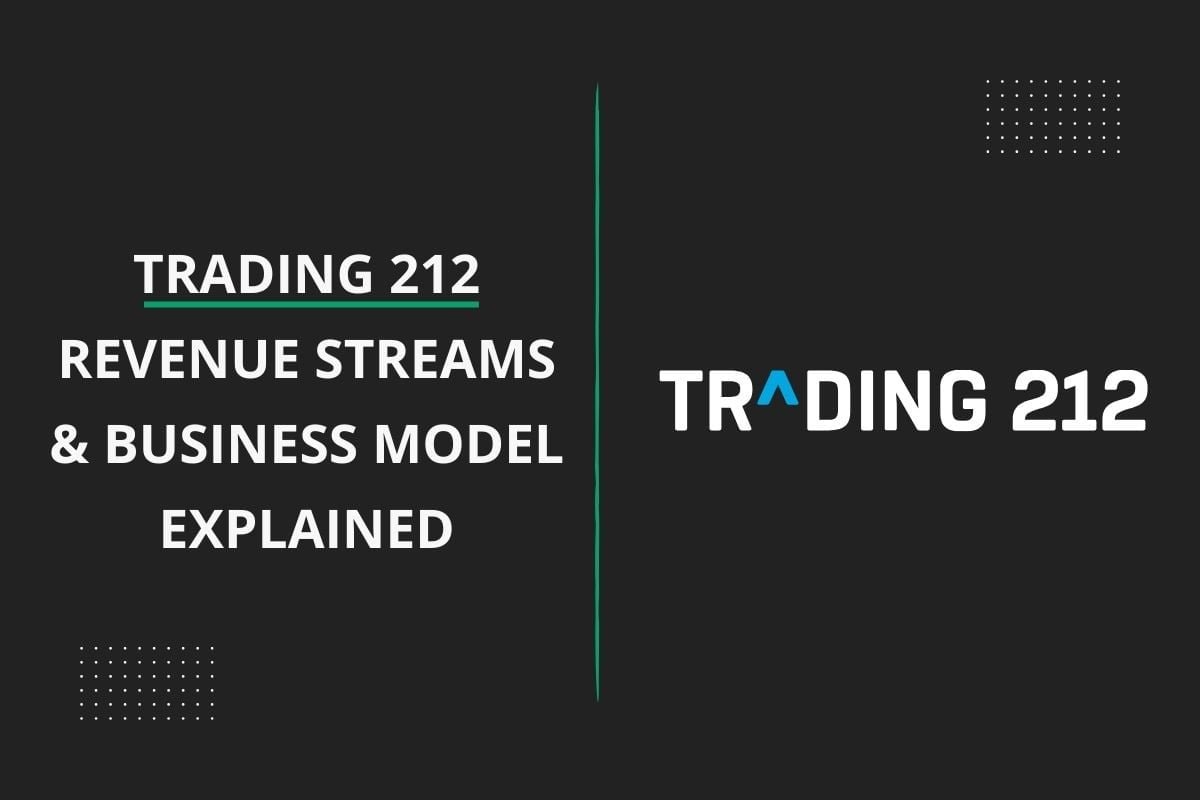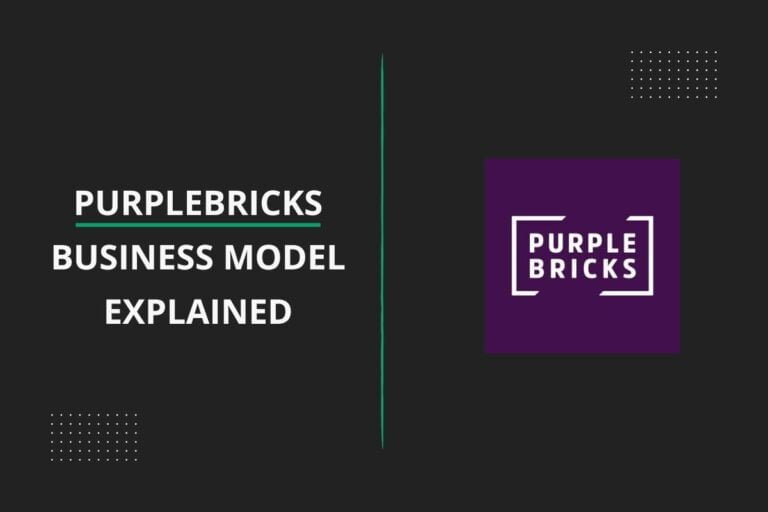How Does Trading 212 Make Money: 7 Ways T212 Sustains Its Business Model

Trading 212 is a popular British investment platform that offers commission-free trading on stocks, ETFs, and more within its user-friendly app interface.
Trading 212 mainly makes money through Spreads, CFD Fees, Share Lending, and FX fees.
Now, the company has been making waves in the world of online brokers with its zero-fee approach.
But if trades are free, how does Trading 212 generate revenue to keep the lights on? Let’s take a look at Trading 212’s business model and how it stays profitable.
3 Key Takeaways
- Trading 212 primarily makes money through spreads, payment for order flow, share lending, and premium services.
- The platform’s focus on user experience and ease of use attracts a wide customer base, increasing its revenue potential.
- Despite offering commission-free trading, Trading 212 has a sustainable business model.
What is Trading 212?
| Name | Trading 212 |
| Status | Private |
| Net Worth 2024 | £120M |
| Source of Income | Spread, CFD fees, Share Lending, Currency Conversion Fees |
| Famous For | Fintech Company, Online Brokerage, Commission-free Trading |
| Year Founded | 2003 |
| Country | United Kingdom |
Trading 212 is a rapidly growing fintech company headquartered in London, UK. It was established in 2003 and also serves in Bulgaria, Australia, Limassol, and Cyprus.
It provides users with a user-friendly platform to invest in various assets, including:
- Stocks: Shares in individual companies
- ETFs (Exchange-Traded Funds): Baskets of stocks or other assets
- Forex: Currency trading
Commodities: Gold, oil, etc. (through CFDs)
One of the main attractions of Trading 212 is its commission-free structure on its Invest and ISA accounts.
This makes the platform particularly appealing to those looking to minimize trading costs.
How Does Trading 212 Work?

Trading 212 provides you with two primary account options:
- Trading 212 Invest: An account type designed for traditional buy-and-hold investing in stocks and exchange-traded funds (ETFs).
- Trading 212 CFD: This account allows trading in contracts for difference (CFDs), which are derivatives that let you speculate on the price movements of assets like forex, cryptocurrencies, commodities, and more.
The platform also offers an ISA account (a tax-advantaged investment account available in the UK).
Here’s a basic process to get started with Trading 212
Account Creation: You sign up by providing the necessary details.
Funding: Deposit funds into your Trading 212 account.
Selecting Assets: Search for stocks, ETFs, or other assets you want to invest in.
Placing Trades: Execute buy or sell orders on the platform.
Portfolio Management: Track your investment portfolio’s performance.
One of the great things about Trading 212 is its user-friendly design.
The platform is easy to navigate, with clear and concise information about each asset, including charts, prices, and market news.
Plus, you can also set up custom watchlists, receive price alerts, and access advanced technical analysis tools to help you make informed trading decisions.
In terms of fees, Trading 212 is very competitive.
There are no commissions on trades, and the platform offers tight spreads on many assets. You’ll also benefit from low overnight fees and no hidden charges.
Finally, Trading 212 takes security and regulation very seriously.
The platform is registered in the UK and Bulgaria, and client funds are protected up to £85,000 by the Financial Services Compensation Scheme (FSCS) in the UK and up to €20,000 by the Investors Compensation Fund (ICF) in Bulgaria.
Check Out Next: How Does PurpleBricks Make Money: PurpleBricks Business Model Explained
How Does Trading 212 Make Money?
Here’s where things get interesting about how Trading 212 really makes money.
Trading 212 has diversified its income streams:
1. Spreads
This is the difference between the bid (buying) price and the ask (selling) price of an asset. Trading 212 earns a small profit on each trade by acting as a market maker.
2. CFD Fees
CFD trading involves fees such as overnight holding fees (if you keep positions open past the end of the trading day).
Also, T212 is usually your CFD counterparty, which means that it makes a nice profit here too, as most retail investors lose money in CFDs.
3. Share Lending
Trading 212 lends out shares held in investment accounts to short sellers, earning interest on those loans.
4. Leverage Fees
Trading 212 earns interest on the borrowed amount when users make use of leverage, which is a key feature of CFD trading.
5. Currency Conversion Fees
Trading 212 charges a flat 0.15% fee when users convert funds from one currency to another for the asset you are investing in.
6. Deposit Fee
Although Trading 212 offers free bank transfers, it does charge 0.7% after €2,000/$2,000 cumulatively for deposits via bank transfers, Google Pay, Apple Pay, etc.
7. Partnerships and Collaborations
Trading 212 may generate revenue from partnerships and collaborations with other financial institutions and service providers, such as market makers, liquidity providers, and technology partners.
Trading 212 Net Worth 2024
While not publicly traded, Trading 212’s net worth is estimated to be £120M.
This suggests significant growth and confidence in the company’s future. However, net worth figures for 2024 are merely speculative.
Final Thoughts: Is Trading 212 Business Model Sustainable?
Yes, Trading 212’s business model looks quite sustainable due to the following reasons:
1. Diversified Revenue Streams: Trading 212 has multiple revenue streams, reducing dependence on a single channel and making its business model more resilient.
2. Scalability: The platform’s online nature allows it to handle a large number of users and trades without significant increases in costs, making it scalable and adaptable to growing demand.
3. Low Operational Costs: Trading 212 has low operational costs since it operates entirely online which naturally allows it to maintain competitive fees and pass savings on to users.
4. Regulatory Oversight: Trading 212 is regulated by reputable organizations, which ensures high levels of security and trust among users, a prerequisite for a long-term business model.
5. Continuous Innovation: Trading 212 invests in technology and innovation, ensuring its platform remains competitive and user-friendly, which is critical for attracting and retaining users.
Overall, Trading 212’s business model is designed to be sustainable, with a focus on diversification, scalability, low costs, regulatory oversight, and continuous innovation.
Its commission-free trading, focus on user experience, and transparent approach to revenue sources draw a large client base.
However, as with any platform for investing, you should weigh its advantages with its potential risks before deciding to use it.
FAQs About Trading 212
What is Trading 212
Trading 212 is a financial platform that offers commission-free trading on stocks, ETFs, currencies, and other assets.
Is Trading 212 safe?
Trading 212 is regulated by the Financial Conduct Authority (FCA) in the UK and offers protection for client funds.
How Does Trading 212 make money?
Trading 212 mainly makes its money through the sale of spreads, CFD fees, shares lending, and foreign exchange fees.
What is Trading 212 Net Worth?
Trading 212’s net worth is estimated to be £120M.
How to withdraw money from Trading 212?
You can withdraw money from Trading 212 by navigating to the ‘Manage Funds’ section in your account and selecting the ‘Withdraw’ option.
Who owns Trading 212?
Trading 212 is owned by the parent company Trading 212 Group Limited, with founders Ivan Ashminov and Borislav Nedialkov at the helm.
Does Trading 212 offer educational resources? Yes, it has a section dedicated to learning resources.






